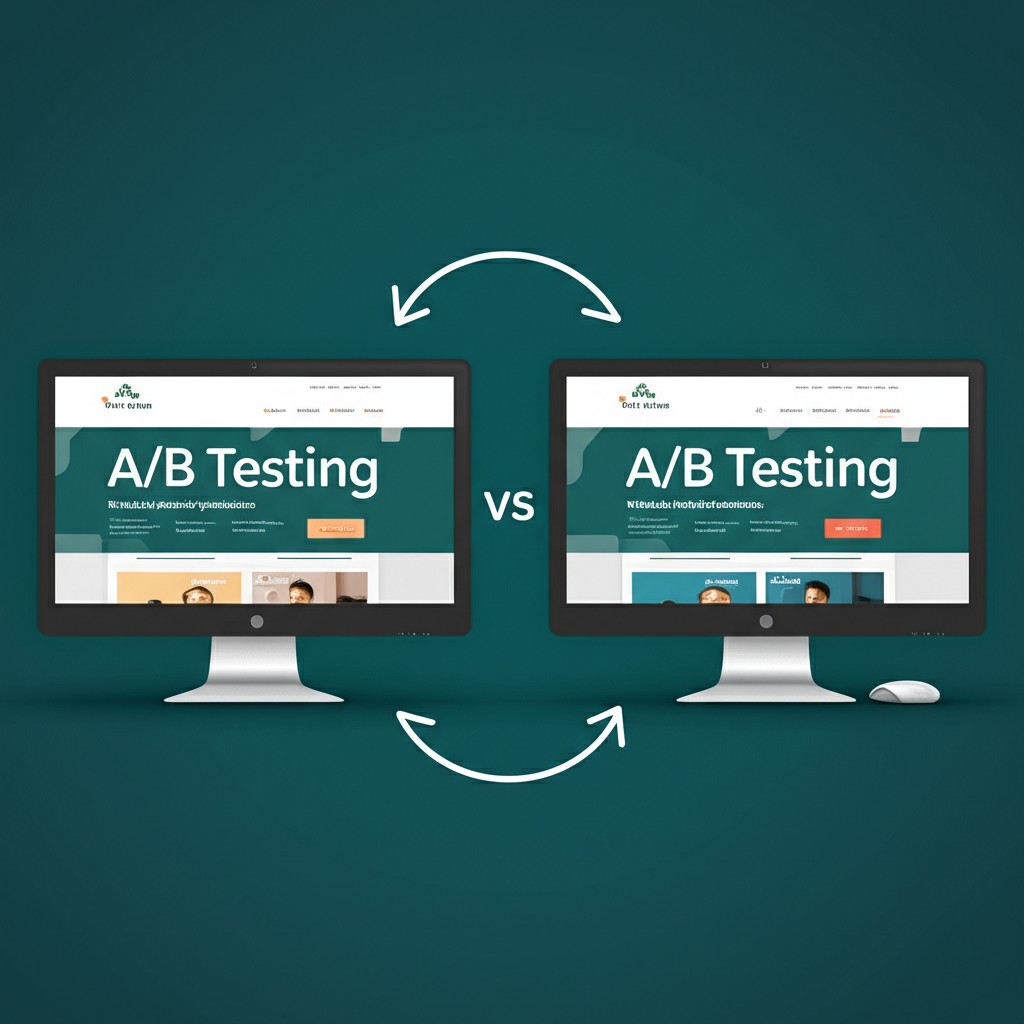Imagine throwing a party and wondering whether guests would prefer pizza or tacos. You could just guess, but wouldn’t it be better to offer both and see which disappears faster? That’s A/B testing for website optimization in a nutshell. It’s a powerful technique that lets you make data-driven decisions, optimizing your website for better conversion rates, improved user experience, and ultimately, greater success.
What is A/B Testing for Website Optimization?
A/B testing, also known as split testing, is a method of comparing two versions of a webpage or app against each other to determine which performs better. You essentially create two variations (A and B) of an element on your site, such as a headline, call-to-action button, or image, and then show each version to a random segment of your visitors. By analyzing key metrics like conversion rates, bounce rates, and click-through rates, you can determine which variation drives better results and optimize your website accordingly. This method removes the guesswork from website optimization, allowing you to make informed decisions based on real user behavior.
Why is A/B Testing Crucial for Website Optimization?
In today’s competitive digital landscape, simply having a website isn’t enough. You need a website that converts visitors into customers. A/B testing for website optimization provides the insights necessary to achieve this. It allows you to understand what resonates with your target audience, what motivates them to engage, and what ultimately leads them to convert. By continuously testing and iterating, you can fine-tune your website to maximize its effectiveness and achieve your business goals. Whether you’re aiming to increase sales, generate leads, or boost engagement, A/B testing is an indispensable tool in your optimization arsenal.
Benefits of Running A/B Tests
Running A/B tests offers a multitude of benefits for website optimization:
* **Improved Conversion Rates:** By identifying the elements that drive conversions, you can optimize your website to encourage more desired actions, whether it’s making a purchase, signing up for a newsletter, or filling out a contact form.
* **Reduced Bounce Rates:** A/B testing helps identify elements that might be causing visitors to leave your site prematurely. By addressing these issues, you can improve user experience and keep visitors engaged.
* **Enhanced User Engagement:** Testing different variations allows you to understand what content and design elements resonate most with your audience, leading to increased interaction and time spent on your site.
* **Data-Driven Decision Making:** A/B testing provides concrete data to support your optimization decisions, eliminating guesswork and ensuring that changes are based on real user behavior.
* **Increased ROI:** By optimizing your website for conversions and engagement, you can maximize the return on your investment in digital marketing efforts.
How to Conduct A/B Testing for Website Optimization
Step-by-Step Guide to A/B Testing
1. **Identify Your Goal:** Determine what you want to achieve with your A/B test. Do you want to increase click-through rates on a specific call-to-action? Improve form completion rates? Clearly defining your objective is the first crucial step.
2. **Formulate a Hypothesis:** Based on your goal, develop a hypothesis about what changes might improve performance. For example, you might hypothesize that changing the color of your call-to-action button will increase click-through rates.
3. **Create Variations:** Develop two versions of your webpage – the original (control) and the modified version (variation). Make sure the changes are focused and measurable.
4. **Select Your A/B Testing Tool:** Numerous A/B testing tools are available, ranging from free options to sophisticated enterprise-level platforms. Choose a tool that suits your needs and budget.
5. **Run the Test:** Using your chosen tool, split your website traffic evenly between the control and variation. Allow the test to run for a sufficient period to gather statistically significant data.
6. **Analyze the Results:** Once the test is complete, analyze the data to determine which variation performed better. Look for statistically significant differences in your chosen metrics.
7. **Implement the Winning Variation:** If the variation outperformed the control, implement the changes on your live website. If the results are inconclusive, consider refining your hypothesis and running another test.
Choosing the Right A/B Testing Metrics for Website Optimization
Selecting the right metrics is crucial for effective A/B testing for website optimization. Different metrics are relevant for different goals. Here are some common metrics to consider:
* **Conversion Rate:** The percentage of visitors who complete a desired action (e.g., making a purchase, signing up for a newsletter).
* **Bounce Rate:** The percentage of visitors who leave your website after viewing only one page.
* **Click-Through Rate (CTR):** The percentage of visitors who click on a specific link or button.
* **Average Session Duration:** The average amount of time visitors spend on your website.
* **Pages per Session:** The average number of pages viewed by visitors during a session.
Common A/B Testing Mistakes to Avoid
While A/B testing is a powerful tool, it’s important to avoid common pitfalls that can lead to inaccurate results or wasted effort. These include:
* **Testing Too Many Elements at Once:** Focus on testing one element at a time to isolate the impact of each change.
* **Ending Tests Too Early:** Allow your tests to run long enough to gather statistically significant data.
* **Ignoring Statistical Significance:** Ensure that the observed differences between variations are statistically significant and not due to random chance.
* **Not Iterating:** A/B testing is an ongoing process. Continuously test and refine your website to achieve optimal performance.
A/B testing for website optimization is not a one-time fix, but rather an ongoing process of continuous improvement. By embracing this methodology, you can unlock the full potential of your website, driving better results and achieving your business objectives. So, what are you waiting for? Start testing and optimizing! What element of your website are you most curious to test? Share your thoughts in the comments below!













